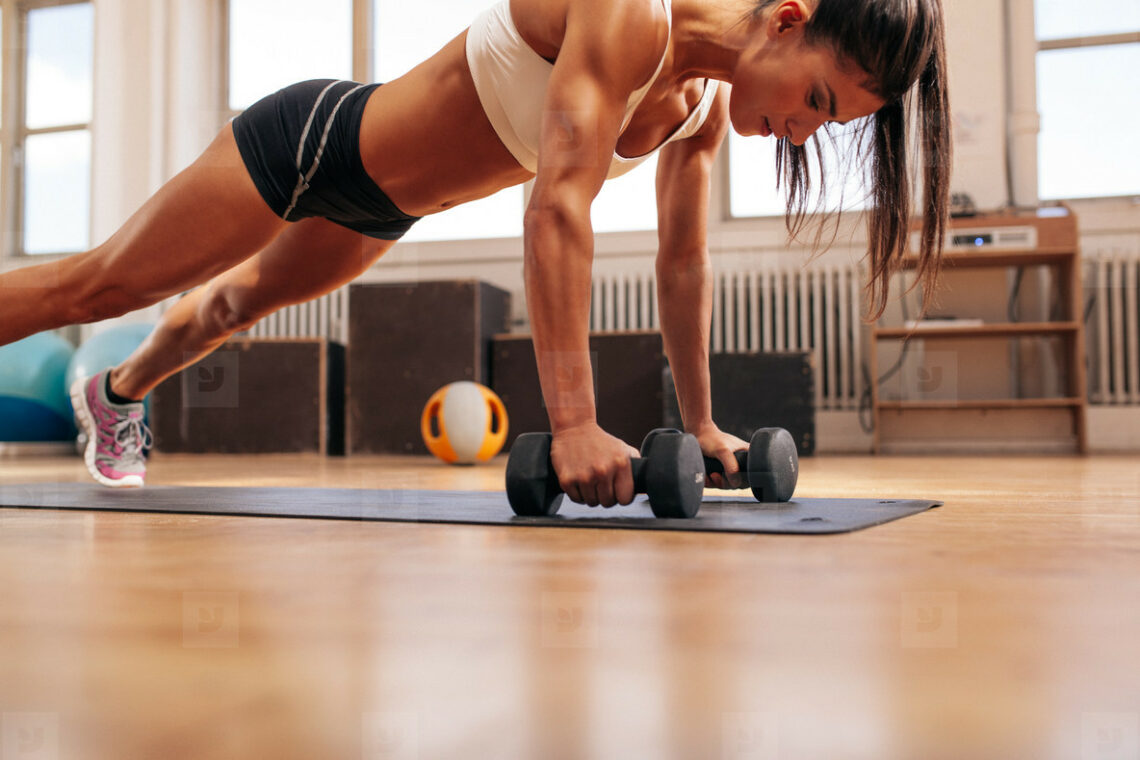The dumbbell push press is a dynamic compound exercise that enhances upper body strength, core stability, and even leg power. Unlike the strict press, which isolates the shoulders, the push press incorporates a subtle lower-body movement to generate momentum, allowing you to lift heavier weights. This guide will break down the benefits of the dumbbell push press, how to perform it correctly, and answer some common questions.
Benefits of the Dumbbell Push Press
Increased Upper Body Strength
Primarily targeting the shoulders, triceps, and upper chest, the push press significantly improves upper body strength.
Improved Power
The explosive nature of the push press enhances your power, which is beneficial for athletes in sports requiring upper body explosiveness.
Enhanced Core Stability
Stabilizing the weight overhead engages the core muscles, including the abs, obliques, and lower back, improving overall core strength and stability.
Better Coordination and Balance
The movement requires coordination between the upper and lower body, enhancing proprioception and balance.
Scalability: Whether you’re a beginner or an advanced lifter, the dumbbell push press can be adjusted in weight to match your skill level.
Accessibility
Dumbbells are widely available, making the push press an accessible exercise that can be performed in a gym or at home.
How to Perform the Dumbbell Push Press
Starting Position
Stand with your feet shoulder-width apart.
Hold a dumbbell in each hand at shoulder height, palms facing each other.
Engage your core, keep your chest up, and look straight ahead.
The Dip
- Initiate the movement by bending your knees slightly. This is the dip.
- Keep your torso upright; the dip is a quick, controlled movement, not a squat.
The Drive
- Explosively extend your legs, using the momentum to press the dumbbells overhead.
- Extend your arms fully, locking out your elbows at the top.
The power comes from your legs, which should propel the dumbbells upward.
The Catch
- Once your arms are fully extended, pause briefly at the top.
- Keep your core engaged to maintain balance and stability.
Returning to the Starting Position
- Lower the dumbbells back to the starting position at shoulder height.
- Control the descent; don’t let gravity do the work.
Repeat
- Perform the prescribed number of repetitions, maintaining form throughout each rep.
Safety Tips and Considerations
- Warm-Up: Always warm up with lighter weights or a dynamic upper body routine to prepare your muscles.
- Form First: Before increasing weight, ensure your form is correct to prevent injury.
- Mind Your Surroundings: Make sure you have enough space, especially when pressing the dumbbells overhead.
- Progress Gradually: Increase weight only when you can perform the exercise with proper form.
- Listen to Your Body: If something feels wrong, stop and assess. Pushing through pain can lead to serious injury.
FAQs
Can beginners do the dumbbell push press?
Yes, beginners can perform the dumbbell push press with light weights to learn the movement. It’s crucial to focus on proper form before progressing to heavier weights.
How often should I incorporate the dumbbell push press into my workout routine?
Incorporate the dumbbell push press 1-2 times per week, allowing for adequate recovery between sessions. It can be part of a full-body workout or an upper body routine.
What are the common mistakes to avoid while performing the dumbbell push press?
Common mistakes include using too much leg movement, arching the back excessively, and not engaging the core. Also, avoid flaring the elbows out wide; they should be slightly in front of the body.
Can the dumbbell push press help improve posture?
Yes, by strengthening the shoulders, upper back, and core, the dumbbell push press can contribute to better posture. However, it should be complemented with exercises that target the rear deltoids and upper back for balanced development.
What should I do if I feel pain during the exercise?
A5: If you experience pain (other than normal muscle fatigue), stop the exercise immediately. Assess your form and reduce the weight if necessary. If pain persists, consult a healthcare professional.
Are there variations of the dumbbell push press that can make it more challenging?
Yes, to increase the challenge, you can try performing the push press with a single arm at a time, which also tests your balance and core stability. Another variation is the push press with a pause at the bottom of the dip to increase time under tension.
Is the dumbbell push press better than the barbell push press?
Not necessarily better, but different. Dumbbells require more stabilization, which can engage more muscles and improve coordination. However, barbells allow you to typically lift heavier weights, which can be beneficial for overall strength development. Both versions have their place in a balanced strength training program.
Conclusion
The dumbbell push press is a versatile, effective exercise for building strength, power, and endurance in the upper body, while also engaging the core and lower body. By following the steps outlined in this guide and adhering to safety tips, you can incorporate the dumbbell push press into your routine safely and effectively. Remember, consistency, proper form, and gradual progression are key to reaping the benefits of this powerful exercise.
- Comprehensive Evaluation Top CBD Oils Examined By CBD Rethink - April 22, 2024
- Exploring Liquid Bliss: A Personal Journey with Just Kratom’s Kratom Gold Shots - April 22, 2024
- Comprehensive Review of the Top CBD Oils By CBD Rethink - April 22, 2024






